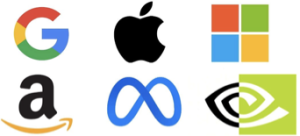Email that converts is rarely an accident. It’s the result of three things working together: the right offer, sent to the right segment, wrapped in a subject line that earns the click. Whether it’s a brand selling products or a business school like MYRA School of Business connecting with prospective students, the fundamentals of effective email remain the same—relevance, clarity, and timing. This approach is especially important for institutions positioning themselves among the best PGDM college in Bangalore.
Everything begins with the offer. People don’t open emails just because they look nice; they open them because there is a clear benefit for them. A strong offer is specific and meaningful: it might be “Download our free career roadmap,” “Get 20% off your first purchase,” or “Join our exclusive webinar on leadership.” For an institution such as MYRA, this could mean inviting students to an MBA info session, sharing a scholarship opportunity, or offering a personalised profile evaluation. The offer should meet the recipient where they are—someone just exploring options needs information and reassurance, while someone already interested may be ready for a call, application, or purchase.
Even the best offer won’t work if it’s sent to the wrong people, and this is where segmentation becomes powerful. Segmentation means dividing your email list into smaller groups based on who people are and how they interact with you—prospective students versus alumni, first-time visitors versus loyal customers, active readers versus inactive ones. Instead of sending one generic message to everyone, you tailor the content slightly for each segment. New subscribers might receive a warm welcome sequence that introduces who you are, what you stand for, and what they can expect from your emails. More engaged readers might receive deeper content such as case studies, success stories, or invitations to exclusive events. Those who haven’t opened emails in a while might get a gentle re-engagement message asking if they’d still like to stay connected. This kind of thoughtful segmentation makes emails feel more personal and relevant, which naturally leads to higher engagement and conversion.
All of this, however, depends on one simple moment: the decision to open the email. That moment is won or lost in the subject line. A subject line is like a tiny promise—it tells the reader what they might gain by clicking. The most effective subject lines are clear, concise, and focused on benefit. They might highlight value (“3 simple steps to boost your career”), create curiosity (“You’re closer than you think”), or introduce urgency (“Last 24 hours to register”). Small details can make a big difference: using a first name, adding a number, or asking a question can significantly improve open rates. Over time, A/B testing different subject lines helps you understand what your audience responds to—whether they prefer direct offers, softer storytelling, or curiosity-driven hooks.
Ultimately, email that converts is not about tricks or gimmicks. It is about respecting the person on the other side of the screen—offering them something genuinely useful, speaking to their specific situation, and inviting them in with a clear, honest subject line. When offers, segments, and subject lines work in harmony, email becomes more than a marketing tool; it becomes a consistent, human way to build relationships, guide decisions, and support people on their journey—whether that journey is choosing a program at MYRA School of Business, growing a career, or simply discovering something new.
Author : Vivek Shah


